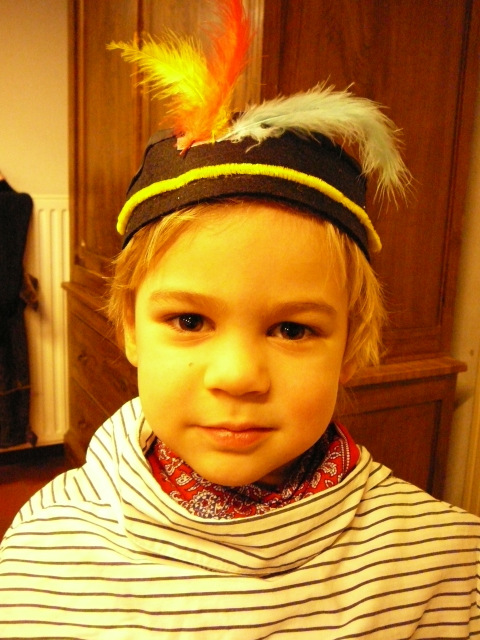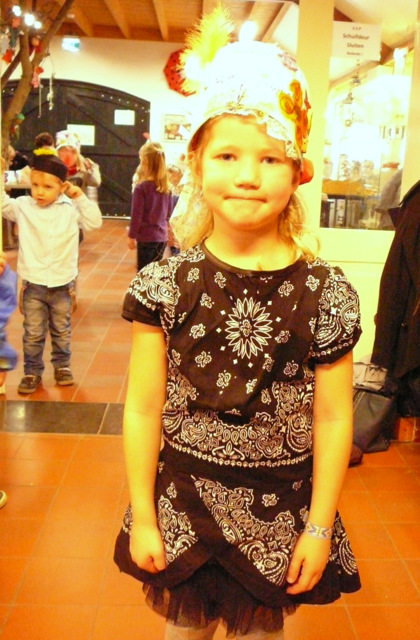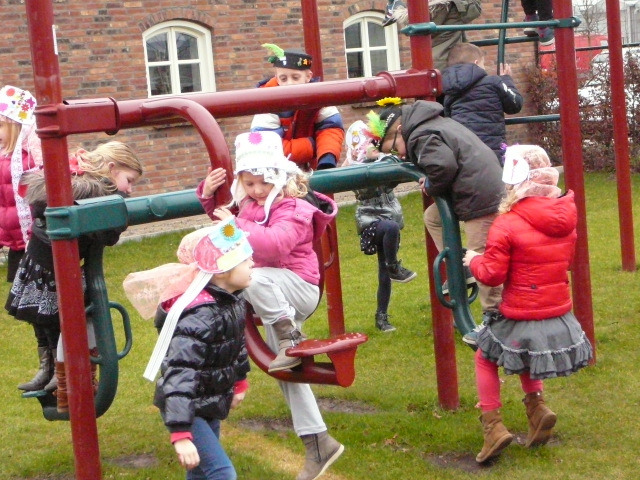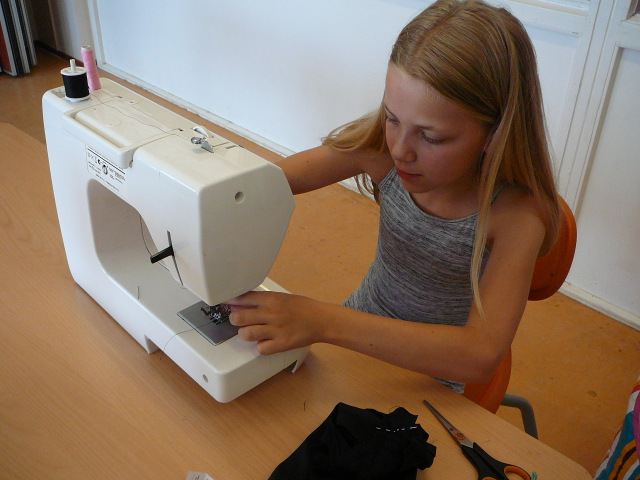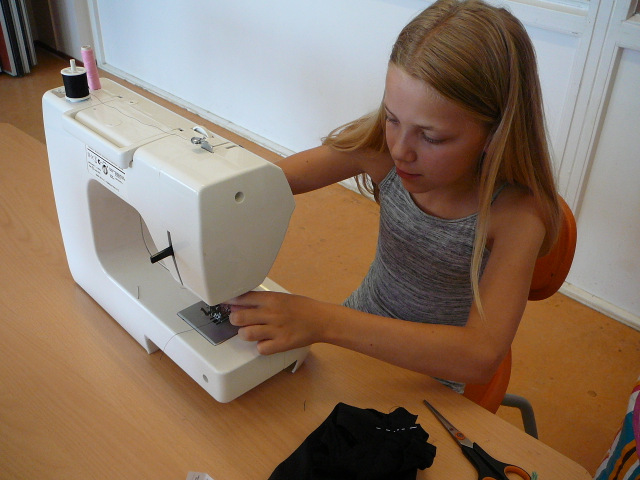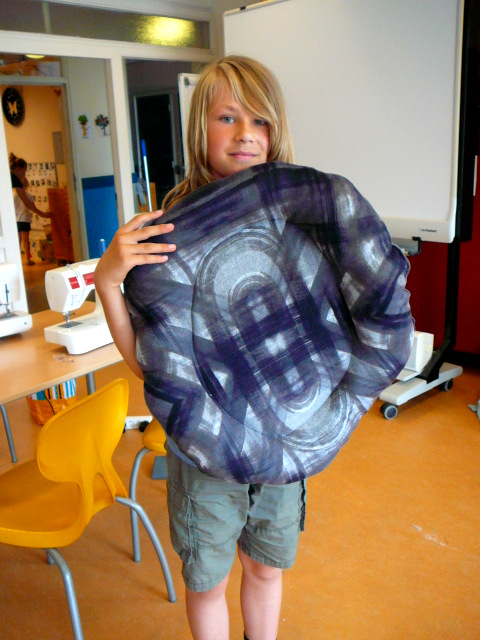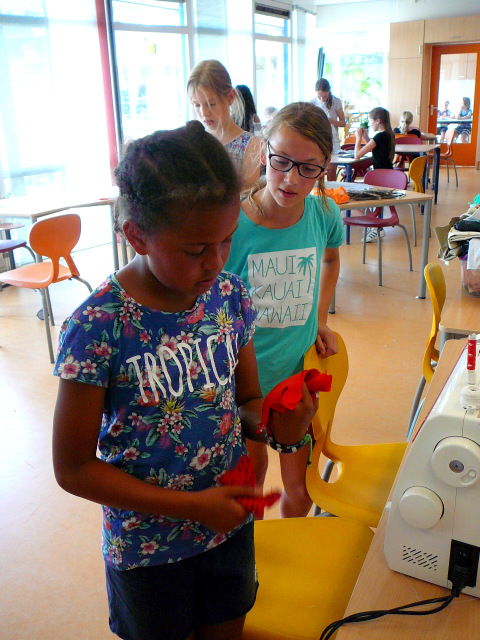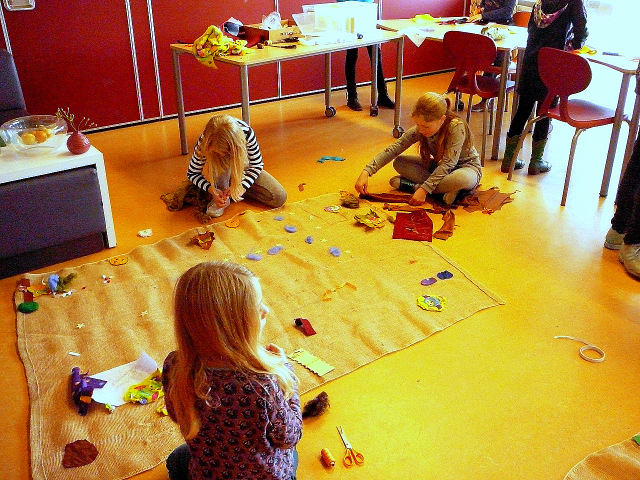In the context of cultural education, Marie-Louise provides various workshops with textiles with a wide range of possibilities. You can think of wall hangings, African clothing, dolls, costumes, traditional costumes, textile art and theme-related workshops. A plan is developed in consultation with the school. The children will carry out an assignment with creative freedom in design, choice of materials and techniques. The aim is to challenge the children and introduce them to all kinds of materials, processes and creativity.
All necessary materials are provided by Marie-Louise. The materials provided by the school are: scissors, good hobby glue, markers, paint, A4 drawing paper, pencils, tape and staplers. Beforehand, there is a meeting with the teacher(s) about the implementation and the entire approach of the project.
You can send any additional questions to contact.
Professions Costumes
from group 1 to group 8
We assume a profession of your choice or the profession of a family member. The children bring an old t-shirt or shirt. The chosen professions are discussed by the teacher with the children before the workshops and passed on to Marie-Louise.
With textile paint, markers, fabrics, beads, etc., the professions are depicted on the clothing and supplemented with accessories. Help from 2 parents is desirable.
The workshop lasts 3 hours. Costs are 135 euros, excluding travel costs, + 5 euros per child material costs
Dolls in all kinds of models
group 3, 4, 5, 6, 7, 8
Dolls can be made in a variety of ways and in a variety of themes. You can dress up existing dolls, sew anthroposophical dolls yourself, make a doll on crossed sticks with a Styrofoam head, work with a puppet doll, etc.
Children from 9 years old can make a doll on a stick in a cardboard tube, a kind of puppet doll that you can move with a stick.
Fabrics, yarn, rope, beads, buttons and possibly materials specially for a theme are available for the implementation.
Costs per person for materials are €3.50. Cost per hour (excluding travel costs) is 45 euros. Implementation in consultation
Clothing through the ages
from group 5
Help from parents is especially welcome at these workshops. If possible, parents who can operate sewing machines.
In prehistoric times, people wore animal skins as clothing. In this workshop, each child chooses a role in the trunk and makes a garment from imitation animal skin. The whole is completed with objects such as a spear, bow and arrow or a cooking pot and firewood, jewelry made of natural products, etc.
The Romans had gladiators, the Roman army, senators, slaves, etc. We are resurrecting this society by making clothes that people then wore with as many authentic looking materials as possible and by using old clothes such as t-shirts and shirts.
From the Middle Ages you can choose professions that no longer exist such as the executioner, a jester, cowgirl, knight, shepherd or night watchman. In this workshop you can change old clothes or make a simple costume yourself. We will look at which materials were available at the time and how they were processed into clothing.
The Golden Age with big differences between rich and poor, distinguished gentlemen and chic ladies, the shipping industry and crews of the VOC, but also artists who earned their money with portraits. We are going to change old clothes to the beautiful clothes of the past. Of course, this also includes beautiful jewelry.
Following on from the history projects pre-history, Romans, Middle Ages and golden age, costumes can be made tailored to other themes.
Expressing colonies with the clothing of the original inhabitants with as much variation as possible in the different inhabitants and their task within the village.
Bringing the Third World to life. You will find peddlers, hairdressers on the street, beggars, artists who sell their work on the street, children in school costumes, women with plastic containers on their heads.
100 years ago
100 years ago the families were very large and when you were the youngest you usually wore the clothes that your older siblings had already worn. You only got something new on a very special occasion such as a wedding. The people were very creative and they knew how to do a lot with little. An old coat that was faded and worn was taken apart, turned inside out and reworked. He looked brand new again.
The assignment is to apply this old technique (turning clothes) in the present time. We are going to make a new piece of clothing using old clothes. For example, you can change an old blazer into a winter coat, make a body warmer, make it smaller or come up with your own design in haute couture style. You can change all kinds of clothes. A garment with pockets, straps, nice buttons, hood, nice collar, etc., gives many possibilities to work with.
You can also get started with combining multiple items of clothing. Grandmas often have a sewing box that contains nice things to process on the clothes. The child looks for old clothes and thinks about the design by drawing a number of designs. During the workshop we will discuss and implement the designs.
Flower Power
Hippies were happy people with a great desire for a peaceful and happy world. Flowers, large motifs and natural materials were widely used.
Many people made their own clothes and wanted to show that they were happy in the clothes, but they also protested with their clothes. They wanted to show that they were free and not stiff and boring. No neat suits and men’s suits, no ironed shirts and starched skirts. Everything nice and airy with cheerful colors.
T-shirts came into fashion, as did jeans, hot pants and short skirts.
With the help of old clothes and all kinds of fun sewing items, we are going to revive the hippies.
We can change models of old clothes and decorate fabrics with textile markers and/or print textiles with cut-out potatoes and stamps. White t-shirts in particular can be edited very well with textile markers and stamping on fabric.
We also make headbands and the peace sign as jewelry on a chain. The children look for sewable items (from grandmother’s sewing box) and old clothes and think about the design by drawing a number of designs. During the workshop we will discuss and implement the designs.
Cost per child for materials is €5.50. Cost per hour 45 euros. Implementation in consultation.
SOCIAL

